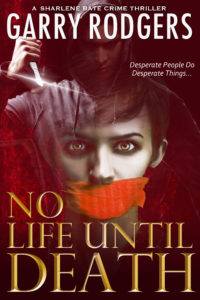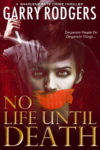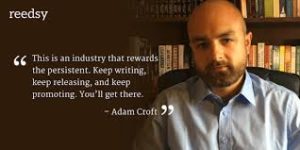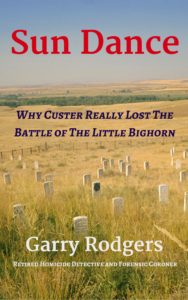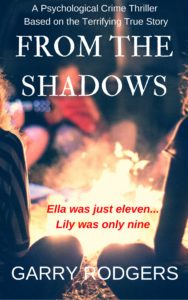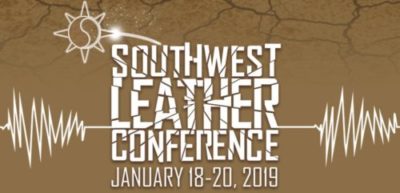 If you’re like me, you probably appreciate quality leather products. Maybe you’d relish a genuine bison-skin jacket or an exotic ostrich-hide purse. Possibly you covet an expensive pair of alligator shoes. And you could be shopping for an old-time, leather messenger bag for your laptop as I am. This week, I searched online for the perfect leather computer case when—suddenly—I got an unexpected invitation to the 2019 Southwest Leather Conference in Phoenix, Arizona. It’s an extreme Bondage & Discipline/Sado-Masochism (BDSM) fetish weekend where anything goes including every erotic sexual kink you can promiscuously twist around leather. Somehow, they thought I’d be a good fit. Let me tell you what happened.
If you’re like me, you probably appreciate quality leather products. Maybe you’d relish a genuine bison-skin jacket or an exotic ostrich-hide purse. Possibly you covet an expensive pair of alligator shoes. And you could be shopping for an old-time, leather messenger bag for your laptop as I am. This week, I searched online for the perfect leather computer case when—suddenly—I got an unexpected invitation to the 2019 Southwest Leather Conference in Phoenix, Arizona. It’s an extreme Bondage & Discipline/Sado-Masochism (BDSM) fetish weekend where anything goes including every erotic sexual kink you can promiscuously twist around leather. Somehow, they thought I’d be a good fit. Let me tell you what happened.
I’m ramping up my writing career this year. That includes turning a fashion leaf and going for the Writer 3.0 look. For Christmas, my family replaced my Levis, Cabalas and Carharts with something more urbane and up-town. They dressed me in distinguished Brixton and CORE. I gotta say, I like what they bought. Now it’s time to go all-out. I smiled, posing in the mirror. I’ll dump my old Kevlar case and splurge on that real-leather computer bag I always wanted.
 I saw lots of leather briefcases and computer bags in retail stores—all shapes, sizes, colors and textures. Some contemporary. Some classic. Some too fancy. Some too plain. But, some reminded me of worn leather cases seasoned trial lawyers hauled into Supreme Court or those beat-up masterpieces courier boys once slung over their shoulders and bicycled with—long before FedEx eviscerated their souls. I’d love a cool leather sidekick like those lawyers and couriers had… nothing too weird or too kinky, though.
I saw lots of leather briefcases and computer bags in retail stores—all shapes, sizes, colors and textures. Some contemporary. Some classic. Some too fancy. Some too plain. But, some reminded me of worn leather cases seasoned trial lawyers hauled into Supreme Court or those beat-up masterpieces courier boys once slung over their shoulders and bicycled with—long before FedEx eviscerated their souls. I’d love a cool leather sidekick like those lawyers and couriers had… nothing too weird or too kinky, though.
I specifically wanted a classic messenger bag with the buckles and pockets. No Velcro, zips or snaps for me. But what retail shops stocked weren’t right, plus their price-point sucked. I went home to Google Chrome. I’ll go online and pick up an internet deal.
Google showed a great selection. I expected super discounts on leather bags—especially as Christmas was over and Boxing Day sales were on. But as Google fed me pages, I saw it was the usual “You get what you pay more for” when I typed in “Best Quality Leather Messenger Bags For Men”.
Oh, there was nice stuff for sure. Google showed me a Frye Logan leather bag with an antique cognac finish and a Jacquard lining that oozed sophistication—Nordstroms had it at $498 USD—but that was a bit rich. Google found a Gucchi that’d make Amal Clooney notice me. It was well north of two grand. Nope. Then Google showed me stuff from Jost Futura, Mancini and Coach Manhattan. Nice. However, reality price checks sent them packing.
 I loved Google’s suggestion on a Knomo London Brompton piece for $299. It even had an RFID implant for when it gets lost at the airport. It was the right size for a small Mac, but not my big old PC. I saw a Mulberry Brynmore bag at $1,270 and there was a Prada Saffiano with a slogan “Gentlemen Prefer Black”. It had a contrasting canvas strap, all for $1,540. Then came a budget-bag from Cambridge priced at $255—in my range. Sadly, it was too smooth a surface—not the rugged Hemmingway-on-a-bender look that I wanted.
I loved Google’s suggestion on a Knomo London Brompton piece for $299. It even had an RFID implant for when it gets lost at the airport. It was the right size for a small Mac, but not my big old PC. I saw a Mulberry Brynmore bag at $1,270 and there was a Prada Saffiano with a slogan “Gentlemen Prefer Black”. It had a contrasting canvas strap, all for $1,540. Then came a budget-bag from Cambridge priced at $255—in my range. Sadly, it was too smooth a surface—not the rugged Hemmingway-on-a-bender look that I wanted.
I got off Google, took a break and scrolled my Facebook feed. What a coincidence! In my sidebar, there was the perfect suggestion. Denali Leather Goods popped-up an ad for exactly the right messenger bag. Couldn’t be better if I made it myself. It was burnished brown goat leather—I have no problem sacrificing a goat for personal pleasure—with one buckle, one front pouch and numerous inside compartments.
This bag-of-bags had eleven 5-Star Reviews and was fifteen bucks off the retail price of $159.99. Plus shipping was free everywhere but war-torn countries. Perfect. I’ll buy it with my card on January 2nd when I can get free money for 45 days.
Hmmm. Sumpin’ funny goin’ on. Since I’d been Googling leather stuff, my FB home page was sending me suggestions. I got unsolicited ads for leather shoes and leather hats and leather furniture. I got ads for leather boots and leather bridles. Then I got a personal message inviting me to attend the 2019 Southwest Leather Conference in Phoenix, Arizona.
This might be interesting. I clicked, expecting some open-air craft market where talented leatherworkers offered hand-made leather goods. I’m all about supporting cottage industries and, yeah, I’d like to visit the Arizona desert as a break to the Pacific Northwest winter wet. I clicked past the home page.
Whooooa! WTF? Is this for real?
 Now Facebook being Facebook and Google being Google, we all know there’s NO COLLUSION. Right? But the two mega-monsters somehow conspired to think I’d be a likely candidate for the most sexually-deviant side-show you can imagine. Some primeval urge caused me to keep clicking.
Now Facebook being Facebook and Google being Google, we all know there’s NO COLLUSION. Right? But the two mega-monsters somehow conspired to think I’d be a likely candidate for the most sexually-deviant side-show you can imagine. Some primeval urge caused me to keep clicking.
Now, anyone who knows me attests I’m the straightest guy ever. I have a hard time traveling because I can’t bend with the Earth’s curvature—kinky to me means having a feathered pillow—not bringing the whole friggin’ bird into bed—and I’m very comfortable in my heterosexual exoskeleton. But, I’m a curious old ex-cop, ex-coroner and wanna-be crime writer so I just had to look at what was going on with the Southwestern Leather Conference. What I found was truly astounding. I had no idea non-inbred people actually did this sort of thing.
The Southwest Leather Conference is an annual event. It’s been growing steadily since 2002. This year, the conference will have over 2,500 attendants and this fills the Four Points by Sheraton in North Phoenix. It’ll be a sellout, for sure, and Sheraton Hotels proudly endorses the event so it must be well-run. I looked at the event roster and saw categories including Bootblacks, Play Parties, Leather Tribal Revival, Drum Circles, Dance of Souls and the Master/Slave Celebration. Hookay…
I checked out the workshops and presentations. BTW, the website was very professional and informative. It’s just that the content exceeded my experience. I’ll leave it for you to decide what’s in your comfort range. You can exit now or keep reading, but here are some direct quotes about workshops you can take in at the Southwest Leather Conference. Then we’ll go on to the presenters.
Bitches Get Stitches – Suture play can be so much fun but requires skill and tools that not everyone has. We will show you many alternative ways to sew with more common materials and less skills required. You can learn and practice same day with just a few supplies. We will show you how to sew for predicament play, how to sew things on to people and even sew people together. Fun with stretchy cord and other non-traditional materials will also be covered. Come and be creative and have some fun! We can also cover real suturing for those who are interested.
![]() Bootblacks: Historical Foundations, Modern Interpretations, Erotic Potential – Learn more about the historical foundations of today’s bootblacking, both in vanilla history and in scene history, and how that shared history has informed the way that bootblacks today work, collaborate, teach and minister to leathers. There are as many styles of bootblacking as there are bootblacks and our culture of diversity and inclusivity reflect that. Bootblacks are sometimes considered the repositories and protectors of our shared leather history; however, unlike academics, bootblacks collect and hold our history through a series of highly personal, often erotic, one-on-one encounters that create this history as often as they collect it. This is not a technical skills class but discussion and thoughts about both leather care and the role of bootblacks in our community are welcomed.
Bootblacks: Historical Foundations, Modern Interpretations, Erotic Potential – Learn more about the historical foundations of today’s bootblacking, both in vanilla history and in scene history, and how that shared history has informed the way that bootblacks today work, collaborate, teach and minister to leathers. There are as many styles of bootblacking as there are bootblacks and our culture of diversity and inclusivity reflect that. Bootblacks are sometimes considered the repositories and protectors of our shared leather history; however, unlike academics, bootblacks collect and hold our history through a series of highly personal, often erotic, one-on-one encounters that create this history as often as they collect it. This is not a technical skills class but discussion and thoughts about both leather care and the role of bootblacks in our community are welcomed.
Daddy Mommy girl boy/i Play – Leland will walk you through her very favorite type of play: Daddy Mommy and girl/boy/i. We’ll cover classic activities, spectrums of the dynamic, how this play can fit with D/s, and dark age play. Please note this class focuses more on leather and service, than littles. We will take into account both the Daddy/Mommy and the girl/boy/i perspectives.
 Elemental Whips – Grounded feet, watering eyes, soaring thoughts and skin on fire. Though we will cover some basic information and technique, this class will be focused on the connection between top & bottom during whip play. It is intended as a guided exchange of energy, being present, conscious and open to a shared experience with another human being. Participation will be welcomed and encouraged from both sides of the slash. Bring your whips and/or your willingness.
Elemental Whips – Grounded feet, watering eyes, soaring thoughts and skin on fire. Though we will cover some basic information and technique, this class will be focused on the connection between top & bottom during whip play. It is intended as a guided exchange of energy, being present, conscious and open to a shared experience with another human being. Participation will be welcomed and encouraged from both sides of the slash. Bring your whips and/or your willingness.
Expression and Connection with Boot Worship – This is a hands-on, interactive workshop with a discussion of basic boot care and the intimacy boot worship can bring to your relationship/s. Fresh ideas, concepts will be explored and inspire new potentials in rituals, protocols or enhancing spiritual energy with the act/s of boot worship. This can be in the form of kneeling, dance, bootblacking, bootsex, or a combination. Bring your boots and open hearts and minds as we discuss, demo, and then hand over the brush to you. Supplies will be available, however bring supplies if you have preferences.
 Getting What and Who You Want Through Role Play – Play Fantasies are an integral part of sexuality. Roleplaying can lead to better sex, hotter scenes and more intimate relationships. You may know how to negotiate to get the beatings you want but have you figured out how to fulfill the deeper, darker fantasies you’ve kept hidden? Through demonstrations and discussion, we’ll share strategies for effective role play, so you can break barriers and can bring your desires to light, design a scene of your wildest dreams and even enlist the help of others. We’ll also include how to incorporate costumes, props, fetishes and of course cover negotiations and safety.
Getting What and Who You Want Through Role Play – Play Fantasies are an integral part of sexuality. Roleplaying can lead to better sex, hotter scenes and more intimate relationships. You may know how to negotiate to get the beatings you want but have you figured out how to fulfill the deeper, darker fantasies you’ve kept hidden? Through demonstrations and discussion, we’ll share strategies for effective role play, so you can break barriers and can bring your desires to light, design a scene of your wildest dreams and even enlist the help of others. We’ll also include how to incorporate costumes, props, fetishes and of course cover negotiations and safety.
Having Sex with Cold Steel – Now that I have your full and complete attention, let’s talk about playing with knives and razors. There are few things on the planet that will get your blood racing and your heart pounding like the cold steel of a beautiful blade. We will discuss types of blades, sizes, shapes and styles. Various techniques and scenarios will also come into play. bring your favorite blade/s and someone to practice on, because this is a hands-on class and demo.
 Humiliation and Mind Fuckery – Humiliation play can be a powerful way to connect with a partner or playmate. Opening up to your most vulnerable state and allowing another to play with that can be powerful, fun and scary. How it occurs depends very much on the bottom and where their vulnerabilities lie. This class will help you identify these things in your bottom, how to play with them and how to care for them after. Play like this can often require a bigger time investment with your partner as it can affect them profoundly. There will some great demo to show how Renegade approaches humiliation play. Come enjoy the show.
Humiliation and Mind Fuckery – Humiliation play can be a powerful way to connect with a partner or playmate. Opening up to your most vulnerable state and allowing another to play with that can be powerful, fun and scary. How it occurs depends very much on the bottom and where their vulnerabilities lie. This class will help you identify these things in your bottom, how to play with them and how to care for them after. Play like this can often require a bigger time investment with your partner as it can affect them profoundly. There will some great demo to show how Renegade approaches humiliation play. Come enjoy the show.
JLube: It’s Not Just For Cattle Anymore – This class would be 3 parts: Part 1 will consist of basic information on Jlube, risks involved with Jlube and safety practices involved in creating/storing it. Part 2 will consist of an open discussion on common “add-in” ingredients. Here we will discuss the pros and cons of these various personal preference ingredients. Part 3: Using the JLube created live in the class, the presenter will do a live “Fisting 201” (medium/advanced) level demonstration.
![]() Sacred Blood – Blood is a substance deeply rooted in spirituality and magic, and widely regarded as a material component of our life essence. It is the magma of the soul, and when we break the skin it flows from our flesh with all the spiritual power of a freshwater spring released in an earthquake. Come explore a variety of practical techniques for accessing this vital part of ourselves. Topics will include mundane and spiritual safety protocol, negotiating sacred blood scenes, different methods for acquiring blood, and how to use spilled blood for sacred work.
Sacred Blood – Blood is a substance deeply rooted in spirituality and magic, and widely regarded as a material component of our life essence. It is the magma of the soul, and when we break the skin it flows from our flesh with all the spiritual power of a freshwater spring released in an earthquake. Come explore a variety of practical techniques for accessing this vital part of ourselves. Topics will include mundane and spiritual safety protocol, negotiating sacred blood scenes, different methods for acquiring blood, and how to use spilled blood for sacred work.
The Hook-Up Joint – Welcome to the meet market. Steven / Carnal_Knowledge and Cricket will help you rock your world and make landing your ideal hook up—whether you want to fuck, make a friend, or find a mentor/play partner—a lot easier. You don’t need to be a pick-up artist; just attend this class and watch your fantasy become reality.
That’s just some of the over 40 workshops you can enroll in at the Southwest Leather Conference. That’s an impressive syllabus if I do say so myself. But what about the presenters? How good are the resources people? Do they know their stuff and have experience? I’ll let you judge from this random presenter list.
BlueFrost – Keynote Speaker – The lovely, and eloquent BlueFrost will be our Keynote Speaker for this year’s Southwest Leather Conference! Don’t forget to add our Keynote Brunch to your event package, you won’t want to miss this!
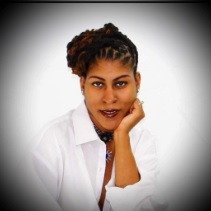 BlueFrost, devoted slave and wife to Mister-Blue, is the 2018 International slave title holder and the 2017 NorthEast slave title holder, co-founder and co-visionary of the Leather Houses of Color Coalition (LHOCC – pronounced “lock”) and the Mistress of the House of Blue (a Het Male Dominant led Leather family).
BlueFrost, devoted slave and wife to Mister-Blue, is the 2018 International slave title holder and the 2017 NorthEast slave title holder, co-founder and co-visionary of the Leather Houses of Color Coalition (LHOCC – pronounced “lock”) and the Mistress of the House of Blue (a Het Male Dominant led Leather family).
She is seasoned with years of experience in kink and BDSM and has many ties throughout the community. As an associate member of a larger group of Leather families, she is known by many as a friend, lifestyle coach, mentor, and sister. Mentored by elders in her local community, she strives to not only carry the torch to light the path for others, but to also brighten her own personal path to excellence in service.
BlueFrost is a familiar face in the public at large as she enjoys sharing lifestyle experiences and information with other slaves and submissives. When time permits, she speaks at national conferences, special interest groups and local munches in an effort to help further educate herself and her peers.
MISTER BLUE – MISTER BLUE, along with his slave BlueFrost, is the 2018 International Master/slave and 2017 NE Master/slave title holder. He is also the senior Master of the House of Blue, an NCSF Coalition Partner, and Board member for both the Leather Houses of Color Coalition and MTTA, Inc.
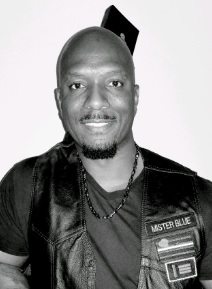 He has been publicly active in the BDSM Lifestyle for more than a decade. For many years he has taken on various roles and responsibilities in the community as a Mentor, Presenter, and otherwise genuine source of knowledge in the way he has navigated through Kink, Leather, and BDSM.
He has been publicly active in the BDSM Lifestyle for more than a decade. For many years he has taken on various roles and responsibilities in the community as a Mentor, Presenter, and otherwise genuine source of knowledge in the way he has navigated through Kink, Leather, and BDSM.
As an associate member of a larger collective of Leather families, MISTER BLUE has been mentored and raised in Leather by both Masters and Mistresses alike. Having these sources of invaluable and often historical information has allowed him to successfully mentor other Leather Masters and Dominants and pass along this knowledge to the next generation of leaders. As a part of his commitment to educate himself and others, MISTER BLUE teaches about the relationship aspect of the Master/slave model at national conferences and Leather events, local munches and special interest groups.
MOLTENWHISPER – Aliases: Whisper, Mama’s sweet whisper, shenanigator, MOLTENWHISPERER has been a member of the Phoenix Leather and Kink communities since 2009. She identifies as an Alpha slave, a shenanigator, a Mommy and a Bootblack. Whisper carried the title of Southwest Community Bootblack 2012 and is currently part of the producing team for Southwest Leather Bear, Mama Bear and Cub.
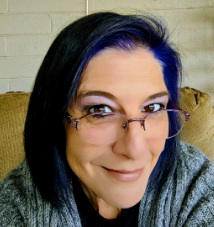 She also shares time supporting various other causes and organizations including, the Littles, Southwest Leather Conference, ALBAC, AML and anything else where her Leather Brothers and Sisters might call for help. Whisper has had the pleasure of Judging several Leather contests, and enjoys watching new titleholders experience all of the opportunities and challenges that come with being a public representative for the community.
She also shares time supporting various other causes and organizations including, the Littles, Southwest Leather Conference, ALBAC, AML and anything else where her Leather Brothers and Sisters might call for help. Whisper has had the pleasure of Judging several Leather contests, and enjoys watching new titleholders experience all of the opportunities and challenges that come with being a public representative for the community.
MOLTENWHISPERER is a Mommy to Sweet Little Boo and is partnered with RavenCross. She also has a beautiful amazing girlfriend Kristal (who lives too far away!) and considers herself to be extremely lucky in her chosen family.
Whisper is a sensualist and also loves a good intellectual fuck. Her proclivities include but are not limited to Bootblacking, needle play, shenanigans, high protocol service, shenanigans, cooking beautiful food, impact play, whipping, caning, predicament bondage, shenanigans, spanking, objectification and dirty nasty piggy piss play. And always, Bacon. And, did I mention, shenanigans.
Pug – Pug is a heterosexual leatherwoman that identifies as a slave, pup, boy, and masochist. She is the founder and producer of the Southern California Leather Gathering (SCLG), an annual picnic event that brings together BDSM and leather folk of all genders and orientations. Over the years, Pug has been actively engaged in a variety of leather and BDSM organizations. She has been involved with almost every aspect of producing and implementing leather/BDSM events and contests as well as having been a judge for numerous leather title contests across the country. Pug has also served as a past instructor for the APEX/Butchmanns Experience Academy.
 A presenter at countless BDSM and leather events around the U.S. and Canada, she speaks on topics such as fear, protocol, power-based relationships, spirituality and kink, blood play, Kavadi, hot wax, and pup play. Her pup writings have appeared in Jack Rinella’s book, “Partners in Power” as well as in “Pulp” magazine and previously on the LeatherDOG website. Her other BDSM-related writings have previously appeared on websites such as Robert Dante’s Boudoir Noir, Dr. Susan M. Block’s Sexuality Resource Library, as well as her own website leatherpug.com.
A presenter at countless BDSM and leather events around the U.S. and Canada, she speaks on topics such as fear, protocol, power-based relationships, spirituality and kink, blood play, Kavadi, hot wax, and pup play. Her pup writings have appeared in Jack Rinella’s book, “Partners in Power” as well as in “Pulp” magazine and previously on the LeatherDOG website. Her other BDSM-related writings have previously appeared on websites such as Robert Dante’s Boudoir Noir, Dr. Susan M. Block’s Sexuality Resource Library, as well as her own website leatherpug.com.
Her long history of involvement and activism in both the pansexual and gay BDSM/leather communities led Pug to be interviewed as part of the Women’s Leather History Project which is housed at the Leather Archives and Museum. She has been honored to receive a number of community awards over the years.
Collared since 2014, Pug is honored and proud to be in service to Sir Wombat. She is also fortunate to call Pup Rocko her Alpha.
MASTER SKIP – MASTER SKIP addressed a crowd of nearly one million people at the Millennium March on Washington, and since then he has given more than a dozen keynote addresses and presented nearly 250 programs on the spiritual dynamics of BDSM at noteworthy leather events throughout North America. He has been profiled in Nerve.com magazine, Power Exchange magazine, the award-winning documentary film Pup, and Ask the Man Who Owns him, a book on gay male Master/slave relationships that received the National Leather Association’s 2010 non-fiction literary award.
 MASTER SKIP is a co-founder of People of Leather Among You (2002-2006), a social and educational group for Southern California men and women interested in the integration of spirituality and leather/fetish sexuality; has served as a core instructor for the Butchmanns Experience (2001-2007), a periodic weekend retreat offering opportunities for profound personal growth to leathermen and women of all sexual orientations and identities; and was a co-producer of Southwest Leather Conference (2004-2010), “The Leather Family Gathering of Heart and Spirit.” Honors include the Leadership Award and the Lee Montague Memorial Community Service Award from Avatar Club Los Angeles, the Pantheon of Leather Community Choice Award, both the Master Heart Award and the Master Jack McGeorge Excellence in Education Award from the Master/slave Conference, and most recently the Leatherman’s Heart Award from Southwest Leather Conference.
MASTER SKIP is a co-founder of People of Leather Among You (2002-2006), a social and educational group for Southern California men and women interested in the integration of spirituality and leather/fetish sexuality; has served as a core instructor for the Butchmanns Experience (2001-2007), a periodic weekend retreat offering opportunities for profound personal growth to leathermen and women of all sexual orientations and identities; and was a co-producer of Southwest Leather Conference (2004-2010), “The Leather Family Gathering of Heart and Spirit.” Honors include the Leadership Award and the Lee Montague Memorial Community Service Award from Avatar Club Los Angeles, the Pantheon of Leather Community Choice Award, both the Master Heart Award and the Master Jack McGeorge Excellence in Education Award from the Master/slave Conference, and most recently the Leatherman’s Heart Award from Southwest Leather Conference.
In MASTER SKIP’s own words, “Blood may be thicker than water, but leather is thicker than blood.”
Okay, there’s no doubt this lineup would receive expert witness status within their field. That’s beyond dispute. I’m sure anyone interested in this lifestyle would be enlightened and erotically entertained by their expertise. But how controlled and disciplined are these marginal-from-mainstream magis? Well, the Southwest Leather Conference has strict rules and regulations governing responsible play. Here’s a snapshot of the rules.
![]() Southwest Leather Conference has adopted a “No-Until-Yes” policy of Advanced and Continuous, Enthusiastic, Affirmative Consent for all activities taking place at the Conference. This means that unless a person has specifically said “Yes” to being directly involved in an activity, and as soon as a person tells you to cease directly involving them in an activity (through words or actions) you are obligated to cease directly involving that person in that activity immediately.
Southwest Leather Conference has adopted a “No-Until-Yes” policy of Advanced and Continuous, Enthusiastic, Affirmative Consent for all activities taking place at the Conference. This means that unless a person has specifically said “Yes” to being directly involved in an activity, and as soon as a person tells you to cease directly involving them in an activity (through words or actions) you are obligated to cease directly involving that person in that activity immediately.
Always assume that another person does not want to be directly involved in your activity until you have spoken with them and they have enthusiastically agreed to participate. Past participation in an activity is not an indication that the person is willing to participate in future activity. Those found to be violating the consent of others at the Conference could be banned from further participation in the 2019 event and could be permanently banned from participating in future SWLC events.
![]() The privacy of attendees is paramount to SWLC. Photography/videography/audio recordings of any kind are not allowed at Southwest Leather Conference by regular attendees except in private guest rooms. Select media representatives will have pre-authorization to take photos (but not at the play parties or at the Dance of Souls). We suggest that you leave your cameras in your guest room. Any attendee caught using a camera (including cellphone cameras) in restricted areas might have his/her registration immediately cancelled and the equipment confiscated and checked to ensure that no photos or recordings were taken. That person could be banned from further participation in the 2019 event and could be permanently banned from participating in future SWLC events. The ONLY exception to this rule is after contest and award winners are announced on Saturday evening and Sunday brunch. At that time, the M.C. will announce that photography of the contest/award winners will be allowed for a short time.
The privacy of attendees is paramount to SWLC. Photography/videography/audio recordings of any kind are not allowed at Southwest Leather Conference by regular attendees except in private guest rooms. Select media representatives will have pre-authorization to take photos (but not at the play parties or at the Dance of Souls). We suggest that you leave your cameras in your guest room. Any attendee caught using a camera (including cellphone cameras) in restricted areas might have his/her registration immediately cancelled and the equipment confiscated and checked to ensure that no photos or recordings were taken. That person could be banned from further participation in the 2019 event and could be permanently banned from participating in future SWLC events. The ONLY exception to this rule is after contest and award winners are announced on Saturday evening and Sunday brunch. At that time, the M.C. will announce that photography of the contest/award winners will be allowed for a short time.
![]() Alcohol consumption is only allowed by attendees age 21 and over. Attendees under the age of 21 discovered to be consuming alcoholic beverages at SWLC will be immediately removed from the event with no refund of any part of paid fees.
Alcohol consumption is only allowed by attendees age 21 and over. Attendees under the age of 21 discovered to be consuming alcoholic beverages at SWLC will be immediately removed from the event with no refund of any part of paid fees.
![]() Non-prescription drugs are not allowed except for over-the-counter medications. Illegal or recreational drugs are absolutely not permitted anywhere at SWLC at any time. If a SWLC staff member suspects drug use or possession of drugs, the person will be immediately removed from the event with no refund of any part of paid fees.
Non-prescription drugs are not allowed except for over-the-counter medications. Illegal or recreational drugs are absolutely not permitted anywhere at SWLC at any time. If a SWLC staff member suspects drug use or possession of drugs, the person will be immediately removed from the event with no refund of any part of paid fees.
![]() Clothing that completely covers breasts, genitals, and butt cheeks is required in all areas of the hotel except in guest rooms and where otherwise posted. All SM-related tools and toys must be covered in public areas of the hotel on the public sides of the security curtains.
Clothing that completely covers breasts, genitals, and butt cheeks is required in all areas of the hotel except in guest rooms and where otherwise posted. All SM-related tools and toys must be covered in public areas of the hotel on the public sides of the security curtains.
Throughout reading the Southwest Leather Conference website content, I kept seeing references to a central activity. I found out it’s the Play Party. It seems an anchor point, much like the beer garden at your County Fair.
Ah… No. Let’s call it the way it is. The Play Party is a free-for-all-fuck-fest, but even it has rules. Here’s what’s allowed, what’s not, and what you have to sign-off in order to play.
- All activities are to be consensual for all parties involved.
- All activities must be legal. All members must be at least 18 years of age. Discussions of pedophilia, necrophilia or bestiality are strongly discouraged. Sex workers, like all other members of the general community, are welcome, but sexual solicitation at the SWLC event is not acceptable and will result in immediate revocation of your registration and your removal from the event with no refund of any part of your paid fees.
- The Safeword of the SWLC play space is “Red.” “Red” means stop all action and re-negotiate before continuing.
- In the event that a Dungeon Monitor tells a member to modify or stop a scene, they must be obeyed. The purpose of the Dungeon Monitors is to see that the rules are enforced. Dungeon Monitors have the responsibility to protect the integrity of the space and the right to stop a scene for non-compliance.
- There will be no breath play nor choke play.
- There will be no flying or “aerosoled” blood.
- There will be no urine or feces play.
- There will be no fireplay or any open flame allowed.
- There will be no firearm play (in fact, no firearms are permitted in any hotel space used by SWLC).
- As soon as it is appropriate when the scene is over, clean up the equipment and vacate for the next players. At various locations in the play space, we have provided cleaning supplies to use on equipment, red containers for contaminated waste, and sharps containers for the sharps.
Participants at the Southwest Leather Conference do so at their free will and accept responsibility, no matter what happens. The waiver covers that. It’d be irresponsible for an event host to assume risk regardless of how well-intentioned participants and facilitators are. Here’s what you have to sign before getting your ID badge at the conference.
![]() I am freely and voluntarily choosing to attend and participate in this event and to view and/or participate in activities that I know are adult-oriented and sexually explicit and that involve acts of domination, submission, bondage, discipline, sadism and masochism, and other explicit and extreme sexual fetishes and activities including, but not limited to, spanking, paddling, whipping, waxing, piercing, knife or edge or blood play, bondage, suspension, fisting and other oral, vaginal and anal penetration. I understand that these activities involve certain risks including, but not limited to, the possible negligent or reckless conduct of other participants.
I am freely and voluntarily choosing to attend and participate in this event and to view and/or participate in activities that I know are adult-oriented and sexually explicit and that involve acts of domination, submission, bondage, discipline, sadism and masochism, and other explicit and extreme sexual fetishes and activities including, but not limited to, spanking, paddling, whipping, waxing, piercing, knife or edge or blood play, bondage, suspension, fisting and other oral, vaginal and anal penetration. I understand that these activities involve certain risks including, but not limited to, the possible negligent or reckless conduct of other participants.
![]() I am aware that these activities are considered extremely hazardous activities. I am voluntarily participating in these activities with full knowledge of the dangers involved, and I accept and I assume full responsibility for any and all risks of property damage, personal injury or death.
I am aware that these activities are considered extremely hazardous activities. I am voluntarily participating in these activities with full knowledge of the dangers involved, and I accept and I assume full responsibility for any and all risks of property damage, personal injury or death.





